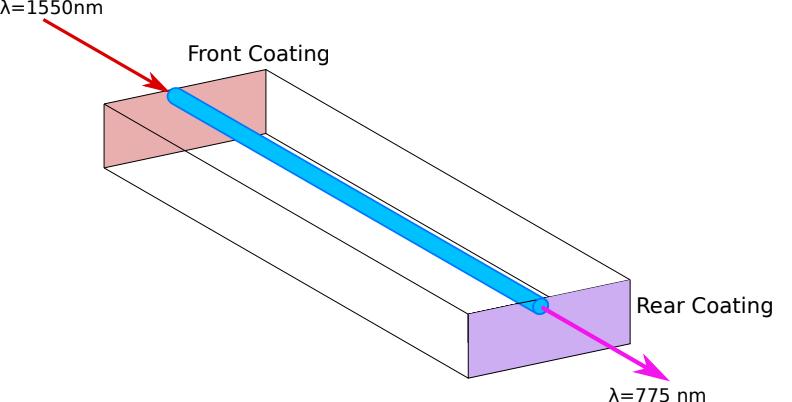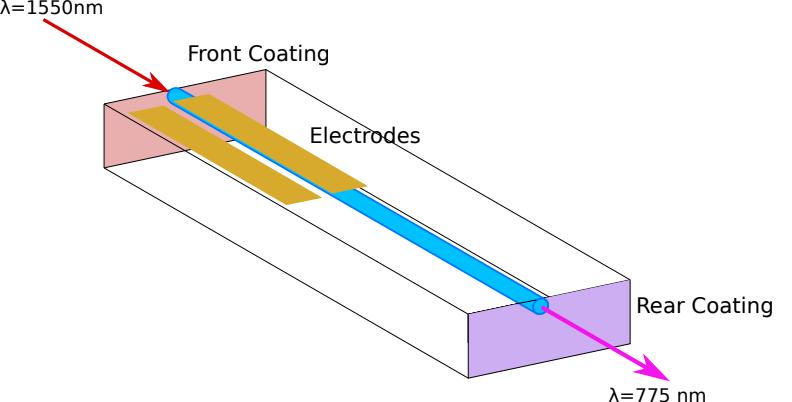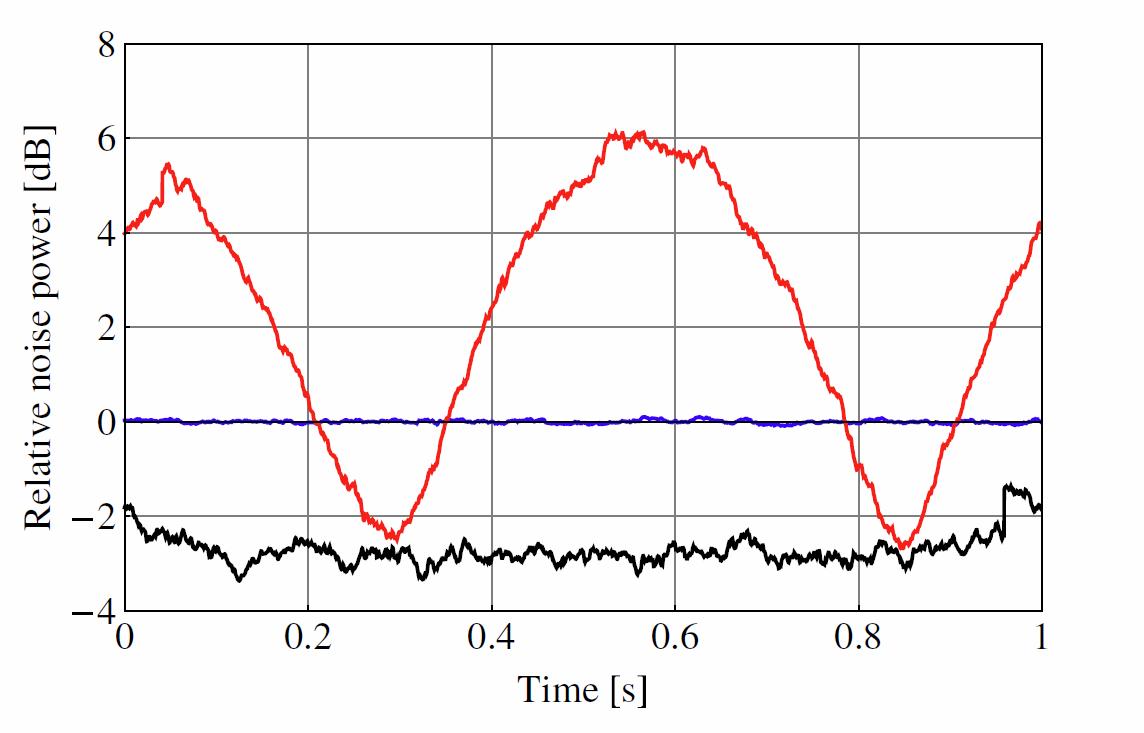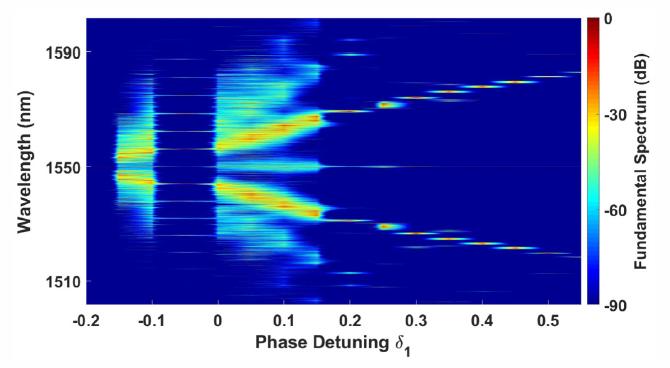Waveguide Resonators
Resonators allow one to enhance the efficiency and shape the spectral output of nonlinear processes. However, resonators are generally very sensitive to losses and often require active stabilisation. Additionally, a commonly used nonlinear material, lithium niobate, is susceptible to photorefraction which will limit the maximum permissible power in these systems. It is for these reasons that the investigation of nonlinear processes in waveguides has been arguably dominated by single-pass schemes, in which the fields propagate through the waveguide only once.
SHG in Waveguide Resonators
Advancements in waveguide technologies continue to reduce the losses observed in these systems, which has led to a resurgence of investigation into these waveguide resonators. One application is that of second harmonic generation (SHG), in which a pump beam is converted into a new beam by combining photons. The use of a low-loss resonator allows one to achieve very high conversion efficiencies with low input powers. Using our titanium indiffused waveguides and applying end-face coatings in-house in order to define a resonator, a device was recently produced that converted an input 1550nm field to 775nm with a conversion efficiency as high as 75%. When stabilising the laser frequency to match the resonance condition of the cavity, over 50% conversion efficiency was stably produced over 1 hour with 50mW of input 1550nm light [1].
More advanced applications will require operation at a specific wavelength. This requires the length of the resonator to be stabilised to the frequency of the laser. Fortunately, one can exploit the electro-optic effect in lithium niobate in order to achieve this. Recent work involves placing electrodes on the sample that will act as a phase modulator. By varying the voltage applied to this modulator one can vary the optical path length and thereby lock the resonance condition of the resonator to the frequency of the laser.
Continuous Variable Quantum Optics in Resonators
In contrast to discrete variable quantum optics, which concerns itself with the production and detection of single photon states, continuous variable quantum optics involves the production of many photon states of light. The building blocks of this field of quantum optics are optical squeezed states, states in which one observable has been reduced below the standard limit set by quantum optics. It is possible to generate these states using a resonator constructed from a nonlinear medium, as is the case for our waveguide resonators. Once again, the shaping and enhanced efficiencies that resonators offer have been exploited in order to produced squeezed states of light whose quantum fluctuations are 6dB below the standard limit when accounting for detection losses [2].
The properties of resonators also opens up many other possible applications. For example there has been great interest recently in producing optical frequency combs using second-order nonlinear processes, such as second harmonic generation, in lieu of the more standard approach of using third-order nonlinearities. We have investigated the suitability of our waveguide resonators for frequency comb generation and observed promising results, although the onset of photorefractive effects was seen to limit the stability of the device [3].
Bibliography
[1] M. Stefszky, R. Ricken, C. Eigner, V. Quiring, H. Herrmann, and C. Silberhorn, “High-power waveguide resonatorsecond harmonic device with external conversion efficiency up to 75%,” J. Opt.20, 065501 (2018).
[2] Michael Stefszky et al. “Waveguide Cavity Resonator as a Source of Optical Squeezing”. Phys. Rev. Appl. 7.4, 044026 (2017).
[3] M. Stefszky, V. Ulvila, Z. Abdallah, C. Silberhorn, and M. Vainio, “Towards optical-frequency-comb generationin continuous-wave-pumped titanium-indiffused lithium-niobate waveguide resonators,” Phys. Rev. A98, 053850(2018).




